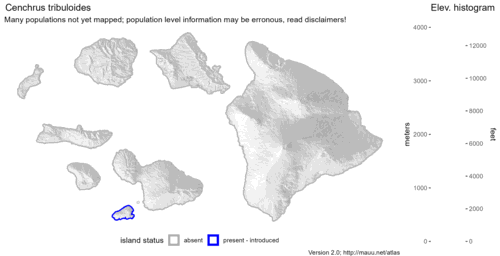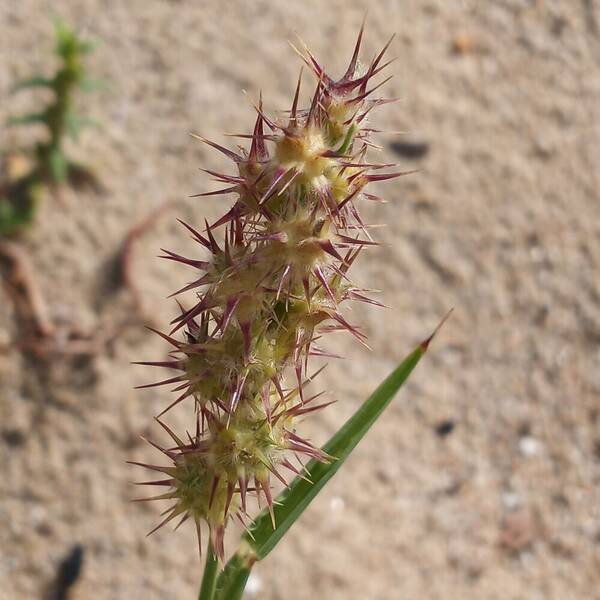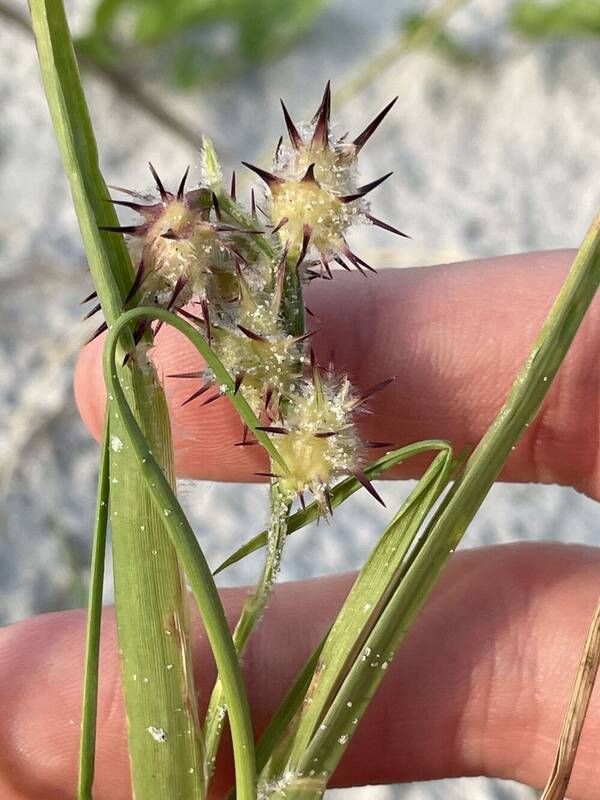Info
Subfamily: Panicoideae
Genus etymology: Cenchrus = "millet" [Greek]. However this is a misnomer, the only millet species in this genus is C. americanus, and this was treated as Pennisetum when Cenchrus was erected.
Species etymology: tribuloides = "resembling a caltrop" [Latin] refering to the burrs
Photosynthetic type: C4 (warm season)
Nativity: naturalized - accidental
First recorded in Hawaiʻi: 1992
Map

Inflorescence
 image credit: Wayne_Longbottom
image credit: Wayne_Longbottom image credit: Bobby_McCabe
image credit: Bobby_McCabePlant
 image credit: hb2000
image credit: hb2000Description
Plants annual. Culms 10-70 cm, decumbent, branching and rooting at the lower nodes. Sheaths compressed, glabrous or pubescent; ligules 1-2.1 mm; blades 2-14 cm long, 3-14.2 mm wide. Panicles 2-8.2 cm; fascicles 9-16 mm long, 4-8 mm wide, imbricate, ovoid, densely pubescent; bristles 15-43; outer bristles usually present, flattened or terete; inner bristles 4-8 mm long, 1.2-3 mm wide, fused for at least 1/2 their length, forming a distinct cupule, the distal portions diverging at irregular intervals from the cupule, stramineous or purple. Spikelets 1(2) per fascicle, 6-8.8 mm. Lower glumes 1-4 mm; upper glumes 4.9-6.8 mm, 3-7-veined; lower lemmas 5.5-7.5 mm, 3-7-veined, enclosing the palea; upper lemmas 6-8.7 mm; anthers 0.8-2.8 mm. Caryopses 2.6-4 mm long, 2.2-3.1 mm wide, ovoid-elliptic. 2n = 34.
(Description source: Barkworth, M.E., Capels, K.M., Long, S. & Piep, M.B. (eds.) 2003. Flora of North America, north of Mexico. Volume 25. Magnoliophyta: Commelinidae (in part): Poaceae, Part 2. Oxford University Press, New York. 783 pp http://floranorthamerica.org/Cenchrus_tribuloides )